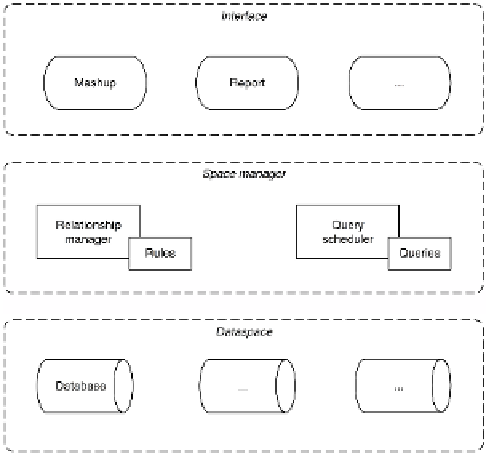Database Reference
In-Depth Information
Fig. 10.3
An overview of the dataspace approach
Another task of the space manager (besides providing a relationship manager)
is to serve as a communicator between the database and the user interface. As us-
ers define questions at the interface level, the query scheduler of the space manag-
er decides which databases to query in order to answer each question. Once the
answer is retrieved from the databases, it is displayed to the user through the inter-
face. Before presenting the output, rules (of the fifth type) may be applied to check
whether it can be shown to the user. This can, for instance, be used to preserve the
privacy of individuals as will be explained in Section 10.5.
The interface layer not only contains mashups of crime data, but also provides
features that are more tailored to the needs of specific users. An example is a pub-
lishing on demand module which provides users with the possibility to generate
and print reports. Such a module should insert automatically updated tables and
graphs in a preformatted report. A feature of this kind is particularly useful for
standardized research reports (see, for instance, Meijer et al., 2008).
Example: A public safety monitor
An example of the dataspace approach at work in the Dutch justice system is the
public safety monitor.
11
This monitor shows the development of the input and out-
put of cases in the different organizations in the criminal law chain. In addition, it
provides a comparison of the actual data with forecasts. The data in the monitor
'
s
dataspace is extracted and aggregated from the various databases in the field of
crime and law enforcement described in Section 10.2.
11
Choenni, S., Kalidien, S., Ariel, A. & Moolenaar, D. (2001).


Search WWH ::

Custom Search